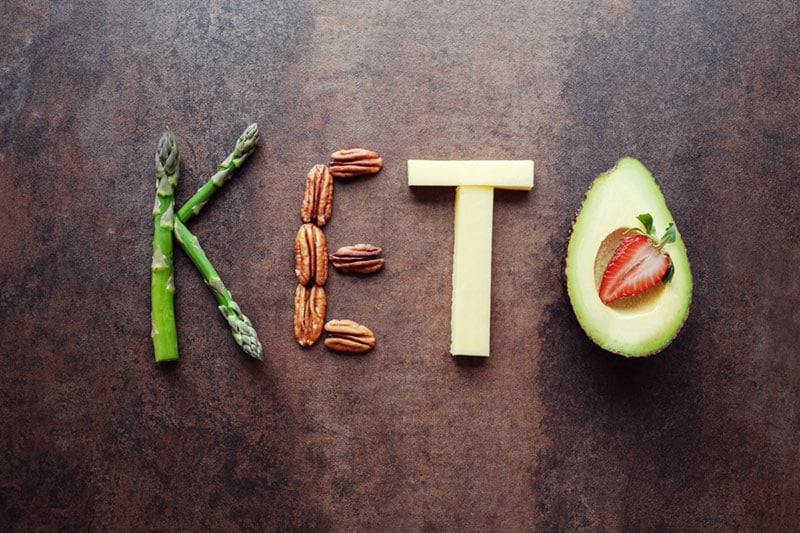
For many of us, the beginning of a New Year means a fresh start, new opportunities and it’s time for those sometimes pesky New Year’s resolutions. When it comes to New Year’s resolutions, exercising more and losing weight are the top two choices most people go with as a goal to start the New Year! With that in mind, there are a variety of diet and exercise options that can help each of us reach our goal. However, the ketogenic diet has become very popular over the years, so in this Health Journal we will break down exactly what the ketogenic diet is, what to eat and what some of the risks might be.
What is the Ketogenic diet?
In its simplest terms, the keto diet is a high fat, moderate protein, low carbohydrate eating pattern, which differs from general healthful eating recommendations. On a keto diet, carbs from all sources are restricted with the goal often being of keeping the total number of carbs per day to below 50 grams. With this restriction, many keto dieters often consume no breads, grains or even some fruits and vegetables, which also often contain carbs.
Now that we understand that the keto diet restricts carbs, you might be asking why? Simply, carbs are the main source of energy for our body so without them the body breaks down fat into ketones which then become the main source of fuel for the body. Ketones are what provide the energy for the heart, kidneys and other muscles. The body also uses ketones as an alternative energy source for the brain, where is where the diet gets its name.
For our bodies, a ketogenic diet is actually a partial fast and differs slightly from a total fast or starvation state, where the body has no source of energy and forces it to break down lean muscle mass for fuel. In the keto diet, the ketones provide an alternative source of energy and helps to maintain lean muscle mass as well.
Is the Keto diet safe?
The safety of the Keto diet has been debated since it first became popular a few years ago, but generally eating in a way that puts your body into ketosis can be dangerous for some and perfectly fine for others. There are certain individuals for which this diet is not recommended for, including those with pancreatic disease, liver conditions, thyroid problems, eating disorders or gallbladder disease.
The keto diet does also come with both short-term and long-term health risks for all people who choose to use it. Short term health risks include possible flu-like symptoms, such as, upset stomach, headache, fatigue and dizzy spells. This has become commonly known as the “keto flu.”
With the diet cutting back on high-fiber vegetables, fruits and whole grains, the keto diet can also increase risk of constipation, so often keto dieters must take a supplement to stay regular, but as always this should be discussed with your doctor.
Long term health risks for the keto diet also include kidney stones, liver disease and deficiencies of vitamins and minerals. To limit carbs, many vegetables and fruits are removed from the diet so sometimes the intakes of vitamins A, C, K and folate can be low.
The high fat nature of the keto diet has also been a controversial topic, especially since a good amount of research has shown that diets high in saturated fats increase the risk of heart disease and other chronic health problems.
Again, always consult with your doctor before deciding on what diets or eating patterns will be best.
What food to eat on keto?
As we have discussed, the keto diet is very restrictive on carbs and what you are allowed to eat, so finding things to incorporate into your diet initially can be difficult. Below we have listed a few different food items that are keto friendly and can help you kick off your diet.
- Seafood: Fish and shellfish are usually very keto-friendly. Salmon for example is not only nearly carb free but also rich in B vitamins, potassium and selenium. Each seafood item does vary in carbs, however, as shrimp and crabs contain none, while oysters and octopus do. While you can eat these items on a keto diet, it’s important to track these carbs to stay within your range.
- Meat & Poultry: Meat and poultry are both considered to be staples of the keto diet. Meat and poultry contain no carbs for the most part and are rich in vitamins and several important minerals. These are used as a great source of high quality protein which help preserve that all important muscle mass during the low carb diet.
- Eggs: These are an extremely healthy protein source and each large egg contains less than 1 gram of carbs, making it ideal for keto. Also, eggs have been shown to trigger hormones that increase feelings of fullness, helping to limit potential food intake as well. With eggs, it’s important to eat whole eggs rather than egg white as most of the nutrients are found in the yolk.
- Green leafy vegetables: These veggies are not only extremely low in carbs, but they’re an excellent source of vitamins, minerals, and antioxidants. In particular, dark leafy greens like spinach, kale, and collard greens are packed with vitamin K and Iron. Green help add bulk and fullness to your meals without drastically increasing the carb count. Some keto friendly options include lettuce, baby spinach, arugula, cabbage, and kale.
Sources:
https://www.eatright.org/health/wellness/fad-diets/what-is-the-ketogenic-diet
https://www.healthline.com/nutrition/ketogenic-diet-foods#veggies